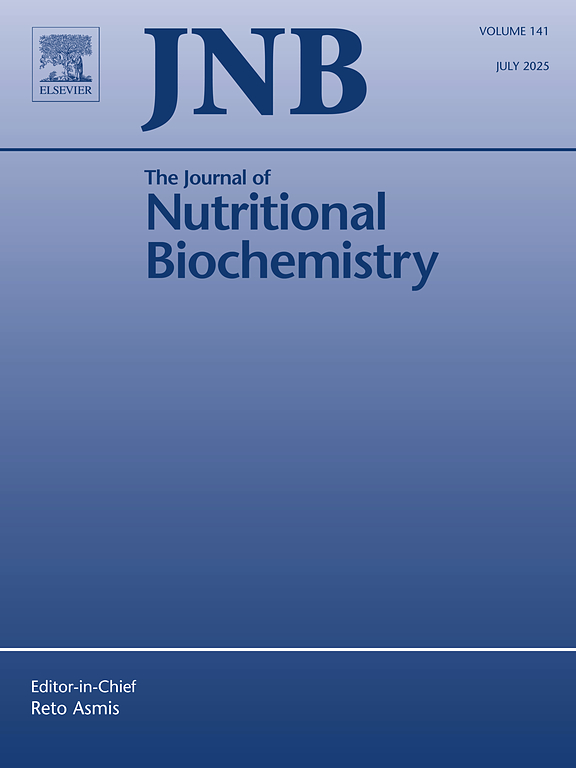Ver ítem
- xmlui.general.dspace_homeCentros Regionales y EEAsCentro Regional Santa FeEEA RafaelaArtículos científicosxmlui.ArtifactBrowser.ItemViewer.trail
- Inicio
- Centros Regionales y EEAs
- Centro Regional Santa Fe
- EEA Rafaela
- Artículos científicos
- Ver ítem
Astaxanthin obtained from freshwater crustaceans mitigates visceral adiposity by modulating adipose tissue lipogenesis and ameliorates dyslipidemia in high-sucrose diet fed rats
Resumen
The incidence of overweight and obesity continues to grow at alarming rates around the world. The search for foods with potential benefits in the prevention/treatment of overweight/obesity and related disorders has great relevance. The aim of this study was to evaluate the effect of astaxanthin (ASTX) from freshwater crustaceans (crabs) upon visceral adiposity, adipose tissue lipid metabolism disorders and dyslipidemia present in a Metabolic Syndrome
[ver mas...]
The incidence of overweight and obesity continues to grow at alarming rates around the world. The search for foods with potential benefits in the prevention/treatment of overweight/obesity and related disorders has great relevance. The aim of this study was to evaluate the effect of astaxanthin (ASTX) from freshwater crustaceans (crabs) upon visceral adiposity, adipose tissue lipid metabolism disorders and dyslipidemia present in a Metabolic Syndrome rodent model. Male Wistar rats were fed for 90 days with 1 of 4 experimental diets: a-Reference group (RD) received a standard commercial rodent diet, b- High-sucrose diet (HSD) group received a HSD, c- RD+ASTX group received a standard commercial rodent diet plus ASTX, d- HSD+ASTX group received a HSD plus ASTX. The rats were given orally either ASTX (10 mg/kg body weight/day in sunflower oil) or only sunflower oil. Compared with HSD-fed rats, HSD+ASTX group had lower body weight gain (19%) and both reduced abdominal circumference (5%) and visceral adiposity index (5%). Energy intake was 24% lower at the middle of the experimental period. Epididymal adipocytes size and triglyceride (TG) content was reduced by 14%. Besides, fatty acid synthase, malic enzyme and glucose-6-phosphate dehydrogenase activities in epididymal adipose tissue were 43%, 28% and 38% lower respectively. These changes were accompanied by lower TG (25%) and cholesterol (27%) serum levels, atherogenic index (31%) and reduced Systolic (12%) and Diastolic (15%) blood pressure. The results show that ASTX could be a potential strategy to prevent/attenuate the incidence of metabolic risk factors such as overweight/adiposity and dyslipidemia.
[Cerrar]

Autor
Vargas, Matias Rodrigo;
Ferreira, María del Rosario;
Collins, Pablo;
D’Alessandro, Maria Eugenia;
Fuente
The Journal of Nutritional Biochemistry 142 : 109924. (August 2025)
Fecha
2025-08
Editorial
Elsevier
ISSN
0955-2863
1873-4847
1873-4847
Formato
pdf
Tipo de documento
artículo
Palabras Claves
Derechos de acceso
Restringido
 Excepto donde se diga explicitamente, este item se publica bajo la siguiente descripción: Creative Commons Attribution-NonCommercial-ShareAlike 2.5 Unported (CC BY-NC-SA 2.5)
Excepto donde se diga explicitamente, este item se publica bajo la siguiente descripción: Creative Commons Attribution-NonCommercial-ShareAlike 2.5 Unported (CC BY-NC-SA 2.5)


